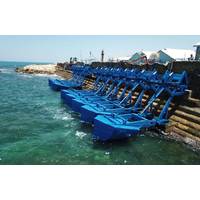DNV GL Undertakes New Study on EU LNG Market
Whilst LNG has proven to be a viable option as a bunkering fuel for ships, there are still challenges to the pace of its development and demand for LNG as a fuel. One of the obstacles to the accelerated uptake is the uncertainty regarding its availability. DNV GL is undertaking a new study on the LNG market in the EU as part of its efforts to drive the development of an EU-wide network of LNG refuelling points. The company has also developed a new tool and guidelines to facilitate wider adoption.
The market study is being carried out on behalf of the CORE LNGas hive project which is co-funded by the European Commission. The research aims to develop a safe and efficient, integrated logistics and supply chain for LNG in the transport industry (small-scale and bunkering), particularly for maritime transport off the Iberian Peninsula. With a total estimated budget of more than EUR33 million, the six-year project is scheduled for completion in December 2020.
The results of the project, coordinated by Enagas, will provide recommendations for the Spanish and Portuguese National Policy Frameworks for alternative fuels supply infrastructure, and will prepare the roll-out plan for future commercial deployment along the Mediterranean and Atlantic corridors in the Iberian Peninsula.
Fernando Impuesto, CORE LNG as hive project coordinator from Enagas, says: “The consortium partners selected DNV GL to execute the demand studies of the project based on the fact that DNV GL has been at the forefront of the development of LNG as a marine cargo for more than 50 years, and for LNG as a marine fuel over 20 years. With that experience and support, they are an important contributor to our success in this project.”
The CORE LNG as hive project follows another project recently delivered by DNV GL for the EU providing recommendations on how to address barriers to wider adoption of LNG as fuel.
Liv Hovem, DNV GL Regional Manager for Continental Europa and North and East Africa, adds: ”DNV GL has significant experience with adoption of LNG as a marine fuel. This is both through development of gas fuel class rules and assisting and advising private and public clients, port authorities, and global government bodies, with consultancy on safety, technical, and commercial market assessments.
“DNV GL has already developed new analytical techniques for assessment, services, standards and recommended practices for the LNG sector and has supported the safe development and operation of 35% of the world’s LNG plants. Our experience shows that more shipowners would consider LNG as fuel if reliable information on LNG availability was easily accessible.
This demand for more knowledge and insight is being addressed with DNV GL’s new online tool, LNGi. This provides comprehensive and up-to-date information on worldwide LNG bunkering availability and market data on LNG as fuel for ships. It aims to bring stakeholders from across the LNG industry together to share market intelligence and contribute to the uptake of LNG as a ship fuel. LNGi is supported by The Society of Gas as Marine Fuel (SGMF).
The portal’s interactive map provides information about LNG bunkering opportunities around the world and also includes data on existing and planned infrastructure such as truck loading facilities, tank-to-ship bunkering options and LNG bunker vessels, as well as detailed information on various port and infrastructure projects. Statistics and further information on alternative fuels and emissions solutions, such as the uptake of scrubbers, give a broader overview of the most popular options to achieve compliance with stringent environmental regulations.
In order to continue meeting and supporting the market in its growing demand for cleaner fuels and versatile LNG applications, DNV GL has updated the Recommended Practice (RP) for development and operation of LNG bunkering facilities (DNVGL-RP-G105). The RP provides the first industry guidance on how to perform quality measurements and quantity metering of LNG fuel supply. This enables the industry to understand the business impact of proper fiscal measurement.
The update is a key driver for the monetization of small-scale LNG distribution and infrastructure to support the development of a more transparent and compatible market and to safeguard sustainable growth.



